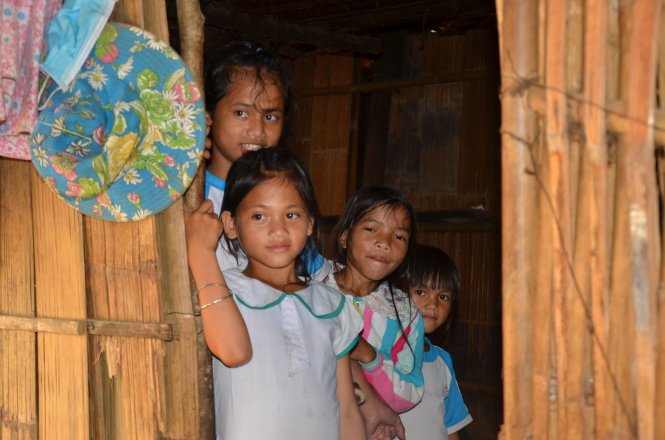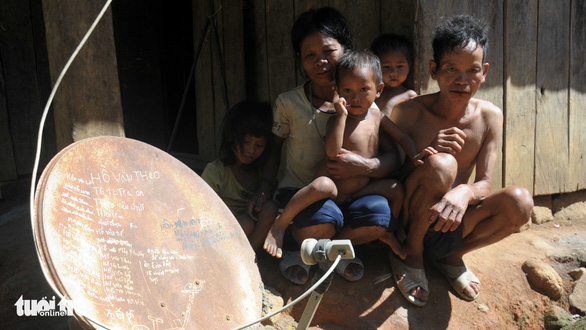Several remote poor villages in central Vietnam are famous or more precisely, notorious, for their untamed birth of babies and this poor contraception has resulted in malnourishment, educational deprivation and regular support from the government.
It is commonplace to have six, seven and even ten young children in each of the families, who live in simple wooden houses with dirt floors, in Tra Quan Commune, the most isolated three-village area of Quang Ngai Province.
More than half of the 444 families in the area have child numbers range from six to ten.
A 54-year-old local man named Ho Van De, for instance, has ten children and he had their names and birth dates written on a disused satellite dish put right in front of his plank-made home to ease reference to the information whenever somebody asks him about it.
But his record number of offspring stands to be surpassed anytime in his mountainside community, where families with seven or eight sons and daughters are many.
His village, shrouded by forest mist, feels chilly even at midday.
Many children in this place are usually seen playing outdoors naked and walking in bare feet on the bumpy dirt path, a reality that testifies to evident poverty.
They are timid by temperament because of rare communication and sighting of strangers from the modern world.
A local woman in her 40s known as Ho Thi Hue has born seven children, the youngest of them five years old, and the eldest, 13.
The offspring had long thrown order out of window in her dank house, where a large bed for all the boys and girls to sleep on is seen and a smaller one is placed in the kitchen for the woman and her husband.
Vegetables are the primary food in the below-poverty-line family, with meat regarded a luxury.
A follow-the-crowd mindset is partly responsible for her fecund reproduction.
“My husband agreed, and I got pregnant. So I gave birth to babies. But many other women here also bore lots of children, some of them having more children than I do,” Hue said.
Contraceptive methods were not seriously followed by spouses.
Another woman, 54-year-old Ho Thi Phuong, who has been more prone to disease after delivering the tenth baby, said she usually failed to stop her husband from having intercourse with her when he was sexually cited after drinking wine.
The man used to tear condoms before using them, while the wife had removed the intrauterine device from her uterus because it tickled, Phuong said.
Malnutrition and inadequate attention to offspring in the villages are unavoidable for a number of families here.
 |
| Children look out from a house in Quang Ngai Province, central Vietnam. Photo: Tuoi Tre |
The government provides relief rice to the residents in the time between two crop harvests to alleviate food shortages.
Many parents are unwilling to fetch children who are expected to be at home when sleeping or meal time comes, thinking that they must simply be staying in neighbors’ house.
Ho Van Son, a local villager with eight children, said rarely did all his boys and girls get together for a meal as most of them eat in any house they come to.
One of Son’s offspring was away from home for a month despite his attempt to seek for the boy around the village, and he later found that the child was tempted by delicious food to stay in a primary school teacher during the period.
Outreach workers have tried to offer birth control methods and reproductive health care to the locals, but their chance of success is not invariably high.
“The most frustrating thing is that parents with more children tend to dodge us and refuse to join health care programs. That’s why there are poor families with many undernourished children,” said Nguyen Thi Bich Thuy, deputy chairwoman of a population and family planning agency in Quang Ngai Province.
While skinny children frolicked with naivety in groups, their parents may be dimly aware of the vicious circle of poverty and high offspring number that is trapping them.
Like us on Facebook or follow us on Twitter to get the latest news about Vietnam!



















































